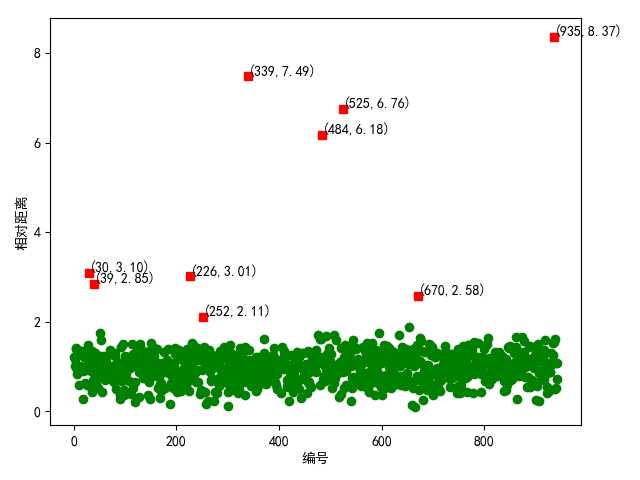标签:标记 com ext sum 循环 not 数据 iter odi
1 import numpy as np 2 import pandas as pd 3 from sklearn.cluster import KMeans 4 import matplotlib.pyplot as mp 5 6 7 def get_data_zs(inputfile): 8 data = pd.read_excel(inputfile, index_col=‘Id‘, encoding=‘gb18030‘) 9 data_zs = 1.0 * (data - data.mean()) / data.std() 10 return data, data_zs 11 12 13 def model_data_zs(data, k, b): 14 model = KMeans(n_clusters=k, n_jobs=4, max_iter=b) 15 model.fit(data_zs) 16 17 # 标准化数据及其类别 18 r = pd.concat( 19 [data_zs, pd.Series(model.labels_, index=data.index)], axis=1) 20 # print(r.head()) 21 # 每个样本对应的类别 22 r.columns = list(data.columns) + [u‘聚类类别‘] # 重命名表头 23 return model, r, k 24 25 26 def make_norm(model, k): 27 norm = [] 28 for i in range(k): 29 norm_tmp = r[[‘R‘, ‘F‘, ‘M‘]][ 30 r[u‘聚类类别‘] == i] - model.cluster_centers_[i] 31 norm_tmp = norm_tmp.apply(np.linalg.norm, axis=1) # 求出绝对距离 32 norm.append(norm_tmp / norm_tmp.median()) # 求相对距离并添加 33 norm = pd.concat(norm) 34 return norm 35 36 37 def draw_discrete_point(threshold): 38 mp.rcParams[‘font.sans-serif‘] = [‘SimHei‘] 39 mp.rcParams[‘axes.unicode_minus‘] = False 40 norm[norm <= threshold].plot(style=‘go‘) # 正常点 41 42 discrete_points = norm[norm > threshold] # 离散点阈值 43 discrete_points.plot(style=‘rs‘) 44 # print(discrete_points) 45 46 for i in range(len(discrete_points)): # 离群点做标记 47 id = discrete_points.index[i] 48 n = discrete_points.iloc[i] 49 mp.annotate(‘(%s,%0.2f)‘ % (id, n), xy=(id, n), xytext=(id, n)) 50 mp.xlabel(r‘编号‘) 51 mp.ylabel(r‘相对距离‘) 52 mp.show() 53 54 if __name__ == ‘__main__‘: 55 inputfile = ‘data/consumption_data.xls‘ 56 threshold = 2 # 离散点阈值 57 k = 3 # 聚类类别 58 b = 500 # 聚类最大循环次数 59 data, data_zs = get_data_zs(inputfile) 60 model, r, k = model_data_zs(data, k, b) 61 norm = make_norm(model, k) 62 draw_discrete_point(threshold) 63 print(‘All Done‘)
显示结果:

标签:标记 com ext sum 循环 not 数据 iter odi
原文地址:https://www.cnblogs.com/dancyhou/p/10269369.html